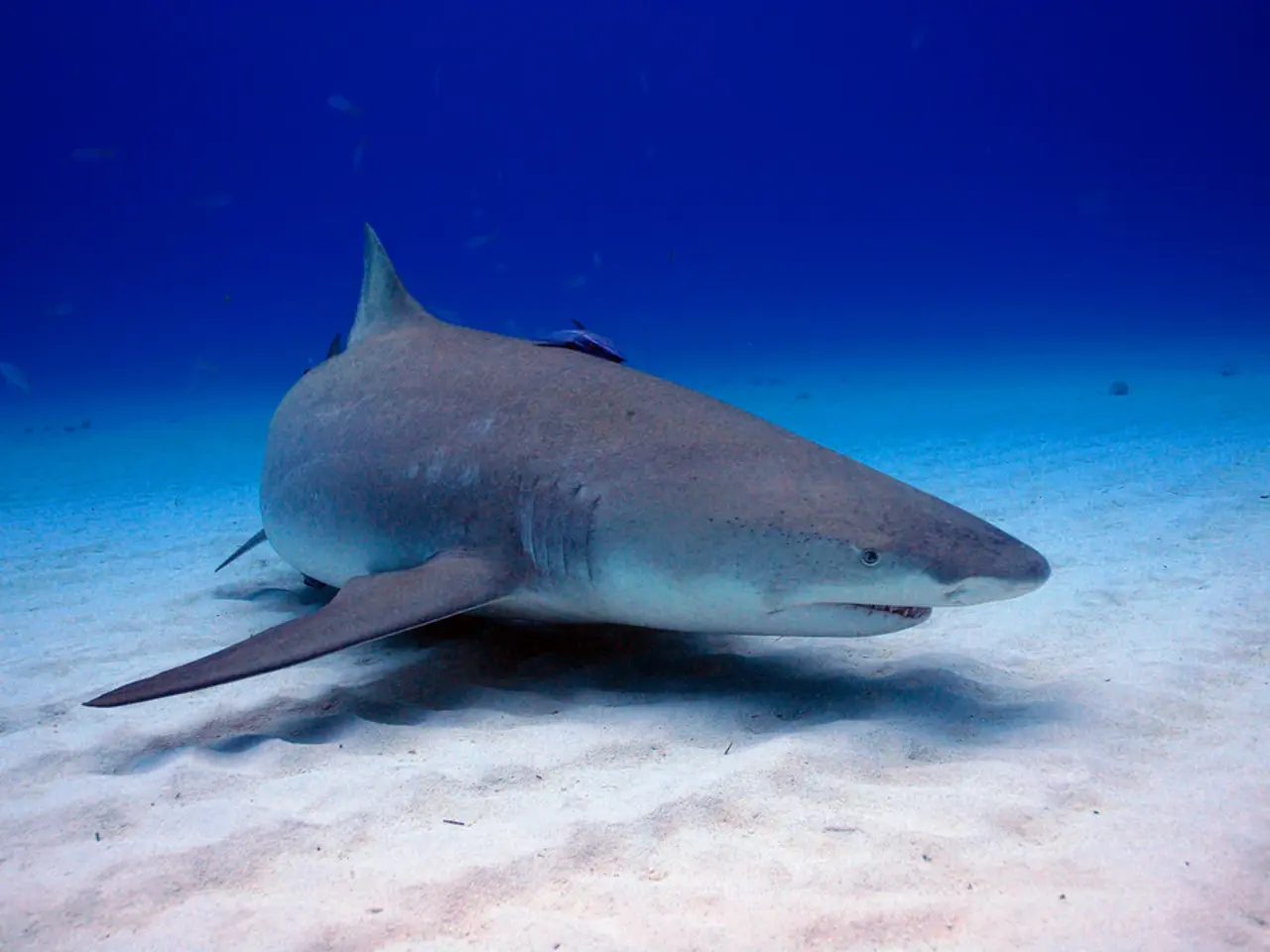Topic: Infectious bacterial disease found in dolphins stranded on Oahu
Hawaii Sees Unprecedented Strandings of Striped Dolphins Linked to Dangerous Bacteria
A series of unusual events has unfolded in the waters of Hawaii, with three striped dolphins found stranded on East Oahu shorelines over a seven-day period, all testing positive for the bacteria Brucella ceti. This is the first time such an occurrence has happened in Hawaiian waters.
The University of Hawaii has linked these summer dolphin strandings to the bacteria Brucella ceti, a finding that has raised concerns among scientists and marine life enthusiasts. CTAHR researchers, led by microbiologist Michael Norris, have discovered a new strain of this bacterium, which they believe is the likely cause of the recent strandings.
The cluster of three strandings within seven days, and within 15 miles of one another, is unprecedented. The new strain of Brucella ceti is currently under investigation this summer.
Brucella ceti has been found in other marine species, including pygmy killer whales, sperm whales, spinner dolphins, and a Longman's beaked whale. However, striped dolphins appear to be especially vulnerable.
Upon examination, there was another striped dolphin stranded in windward Oahu in April that had also tested positive for Brucella ceti. If confirmed, the findings about the new strain of Brucella ceti will likely be published next.
Sightings of dead or distressed marine mammals should be reported to the NOAA marine wildlife hotline at 888-256-9840 to help scientists track strandings and better understand Hawaii's ocean health.
Scientists are urging the public to keep a safe distance from stranded animals such as dolphins and to immediately report any sightings to authorities. Although the risk of brucellosis is low in the state according to the Hawaii Department of Health, it is crucial to take precautions when dealing with marine life.
If confirmed, this new strain of Brucella ceti could have significant implications for marine life in Hawaii and beyond. Broader research on North American marine mammals shows novel genotypes of Brucella ceti exist, expanding knowledge of this bacterium’s distribution and diversity in marine mammals. However, detailed characterization and understanding of this Hawaiian strain’s impact and epidemiology are ongoing.
As of now, it has not been detected in marine mammals in Hawaii, but scientists are monitoring marine mammals for signs of H5N1, or avian influenza.
[1] Norris, M. J., et al. (2025). Characterization of a new strain of Brucella ceti associated with striped dolphin (Stenella coeruleoalba) strandings in Hawaii. Journal of Marine Biology.
[2] Hawaii News Now. (2025, August 3). University of Hawaii links dolphin strandings to bacteria Brucella ceti. Retrieved from https://www.hawaiinewsnow.com/2025/08/03/university-hawaii-links-dolphin-strandings-bacteria-brucella-ceti/
[3] KHON2. (2025, August 5). University of Hawaii researchers find new strain of Brucella ceti in marine mammals linked to recent strandings. Retrieved from https://www.khon2.com/local-news/university-of-hawaii-researchers-find-new-strain-of-brucella-ceti-in-marine-mammals-linked-to-recent-strandings/
- The outbreak of Brucella ceti in Hawaii's waters is causing concern in the scientific community and among marine life enthusiasts.
- According to the CTAHR researchers, the new strain of Brucella ceti found in striped dolphins may be the cause of the recent strandings.
- The unprecedented occurrence of three striped dolphins stranding within seven days in a 15-mile radius is alarming.
- Brucella ceti has been discovered in various marine species, but striped dolphins seem particularly susceptible to this bacterium.
- A striped dolphin stranded in windward Oahu in April also tested positive for Brucella ceti, which may be a part of the same outbreak.
- Members of the public are advised to report any sightings of distressed or dead marine mammals to the NOAA marine wildlife hotline for the purpose of tracking strandings and understanding Hawaii's ocean health.
- It is essential to maintain a safe distance from stranded animals such as dolphins and to immediately report any sightings to authorities, even with the low risk of brucellosis in the state.
- If confirmed, this new strain of Brucella ceti could have far-reaching impacts on marine life in Hawaii and possibly in North America.
- Broader research on North American marine mammals shows the existence of novel genotypes of Brucella ceti, improving understanding of this bacterium's distribution and diversity in marine mammals.
- There has been no detection of this new strain of Brucella ceti in marine mammals in Hawaii as of now, but scientists are monitoring them closely for signs of H5N1.
- Strandings of marine mammals could be indicative of underlying health issues and environmental factors, including climate change and pollution.
- The characterization and understanding of the Hawaiian strain's impact and epidemiology are ongoing, and findings will likely be published in the Journal of Marine Biology.
- Workplace wellness programs emphasizing health and wellness can contribute to employees' overall health and help manage conditions such as cardiovascular disease, diabetes, and mental health issues.
- Fitness and exercise, proper nutrition, and adequate sleep are crucial components of workplace wellness initiatives that promote a healthy work environment.
- Employers are increasingly recognizing that addressing mental health concerns and offering access to therapies and treatments for depression, anxiety, and stress are vital parts of a comprehensive wellness strategy.
- The impact of climate change on wildlife health is an emerging area of research, with concerns regarding the consequences of rising temperatures, changing habitats, and increased prevalence of infectious diseases.




